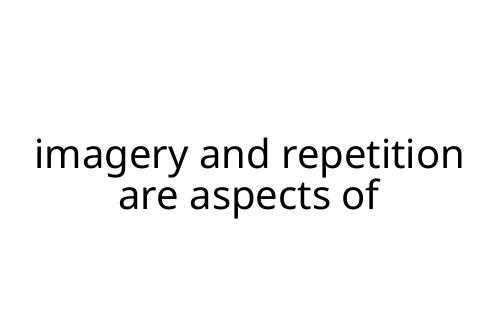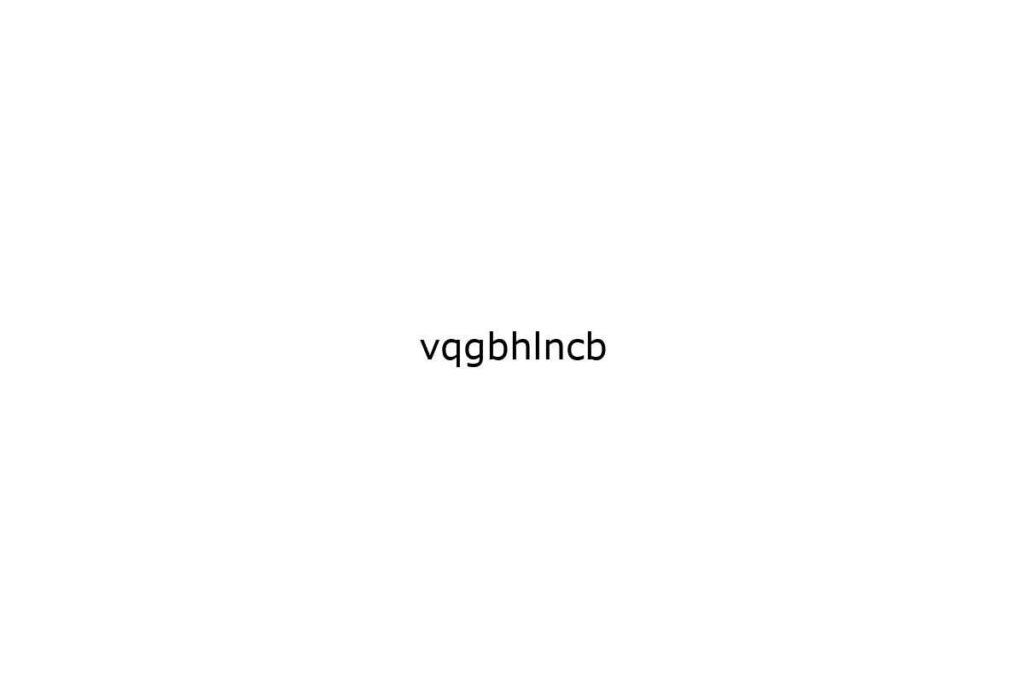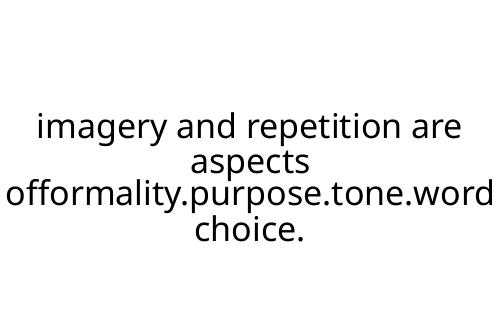imagery and repetition are aspects of
Imagery and repetition are aspects of writing that shape how readers experience a story or message. When you look at any memorable piece of writing—whether it’s poetry, a novel, or a great marketing slogan—chances are, you’ll find these techniques in action. They’re fundamental tools that writers use to engage readers, reinforce ideas, and create lasting impressions.
What is Imagery?
Imagery refers to language that appeals to the senses. Writers use it to paint a picture in the reader’s mind, evoking sights, sounds, smells, tastes, and textures. This sensory detail helps the reader feel present within the scene. For example, describing “the sharp scent of pine on a cold morning” does more than just tell—it immerses the reader.
Effective imagery turns abstract concepts into something concrete. It's particularly important in poetry and descriptive writing, but you’ll find it everywhere from product descriptions to news articles. Precise imagery can make even the most ordinary scenes feel vivid and meaningful.
What is Repetition?
Repetition is the deliberate reuse of words, phrases, or structures within a piece. This technique keeps key ideas front and center, making them more memorable. Think of famous speeches or poems where certain lines echo again and again. The repetition builds emphasis and rhythm.
But repetition isn’t just about hammering a point home. In skilled hands, it creates patterns that feel natural to read—almost like music. Repetition helps structure text, connects ideas, and can even guide the emotional pace of the writing.
How Imagery and Repetition Work Together
Imagery and repetition are aspects of craft that often enhance each other. If a writer uses a striking piece of imagery and repeats it at key moments, that image becomes a thread running through the whole piece. This creates cohesion and theme.
For example, in a story about loss, a repeated image of an empty chair can symbolize absence. The first mention sets the scene; later mentions add emotional weight. The reader comes to associate the image with the story’s deeper meaning.
Pros and Cons in Writing
Both techniques have strengths and pitfalls:
Pros:
- Make writing more memorable and engaging
- Help structure ideas clearly
- Enhance emotional resonance
- Support a strong, cohesive theme
Cons:
- Overuse can feel forced or monotonous
- Poor execution may distract rather than enhance
- Can slow down pacing if not balanced
Practical Tips for Writers
Focus on clarity: Use imagery that is specific and easy to picture.
Mind your balance: Repeat for emphasis, but avoid redundancy.
Edit for purpose: Every image and repetition should serve the message.
Read aloud: Hearing your words can reveal if repetition feels natural or heavy-handed.
Conclusion
Imagery and repetition are aspects of writing that elevate simple words into something more powerful. When used skillfully, they draw readers in, make ideas stick, and shape the mood of any piece. For anyone seeking to improve their writing—whether in fiction, blogging, or business—mastering these techniques offers a practical path to clear, compelling communication.


 Elizabeth Dinglerrin
Founder & CEO
Elizabeth Dinglerrin is the visionary founder behind Bet Wise Daily. With a wealth of experience in the gambling industry and a deep passion for data-driven insights, Elizabeth established Bet Wise Daily to provide a comprehensive source of news, analysis, and exclusive content for casino enthusiasts. Her leadership and strategic acumen have shaped the platform into a leading authority in gambling media. When she's not immersed in the latest trends or pioneering new features, Elizabeth enjoys sharing her expertise at industry conferences and mentoring aspiring professionals in the field.
Elizabeth Dinglerrin
Founder & CEO
Elizabeth Dinglerrin is the visionary founder behind Bet Wise Daily. With a wealth of experience in the gambling industry and a deep passion for data-driven insights, Elizabeth established Bet Wise Daily to provide a comprehensive source of news, analysis, and exclusive content for casino enthusiasts. Her leadership and strategic acumen have shaped the platform into a leading authority in gambling media. When she's not immersed in the latest trends or pioneering new features, Elizabeth enjoys sharing her expertise at industry conferences and mentoring aspiring professionals in the field.
